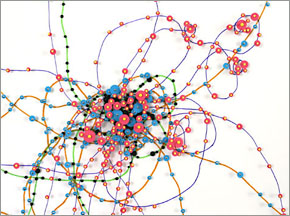I have been talking about the Internet as the delivery mechanism for entertainment, information and communication. I now also think of these as the core of the Corporate Social Graph (CSG). But I also I recently realized that I had left out one of, if not the most important elements that the Internet affords, which is interaction. When I talk about interaction within this context, I’m really talking about the maximum level of interaction a business can attain within entertainment, information and communication.
now also think of these as the core of the Corporate Social Graph (CSG). But I also I recently realized that I had left out one of, if not the most important elements that the Internet affords, which is interaction. When I talk about interaction within this context, I’m really talking about the maximum level of interaction a business can attain within entertainment, information and communication.
I don’t really feel the need to define entertainment and information. I do however understand that there is a lot of confusion about whether communication should be thought of as interaction. So I went to Merriam-Webster and looked up the definitions. At its most basic this is what I found.
Communication: an act or instance of transmitting
Interaction: mutual or reciprocal action or influence
There is an obvious difference. When companies set about creating their CSG they need to consider:
- how/where/when they should entertain
- how/where/when they should inform
- how/where/when they should communicate
- how/where/when they should interact across their entertainment, information and communication
Note: The ‘what’ is the business units message whatever that may be.
Some examples are:
- Creating a YouTube video (flickr photos) featuring your employees having fun at a company function; providing some transparency.
- Providing information on a given subject in Wikipedia to position yourself as a subject matter expert (link to your site in the references section).
- blogging about the company’s goals and place within the market.
Of course not all companies are going to entertain as much as others and yet Blendtec did a fantastic job with thier Will it Blend series and continues to do so with its blending of Weezer’s new CD, Pork’n Beans. A company needs to challenge itself to utilize all three of these with a focus on interaction that the user can control.